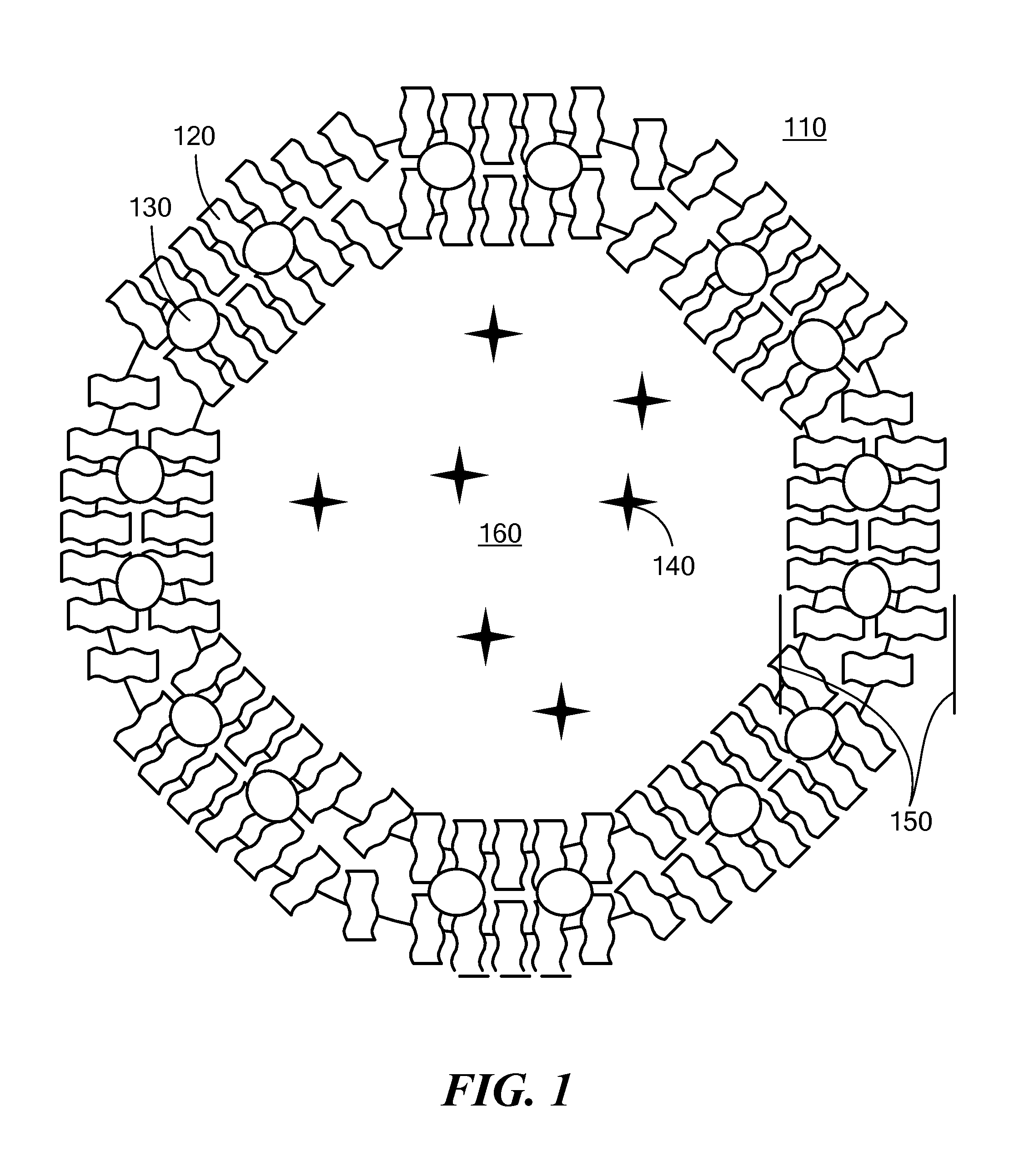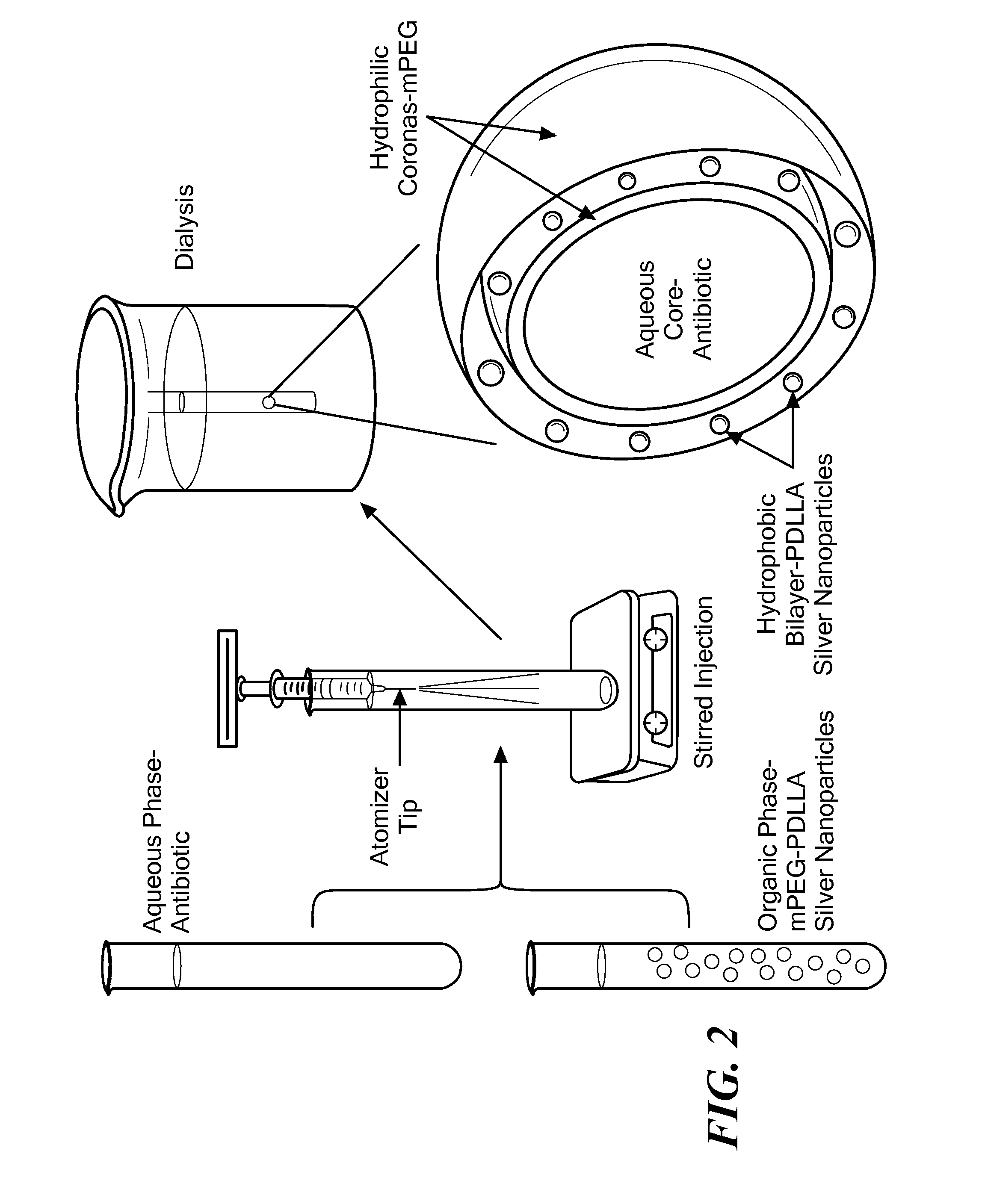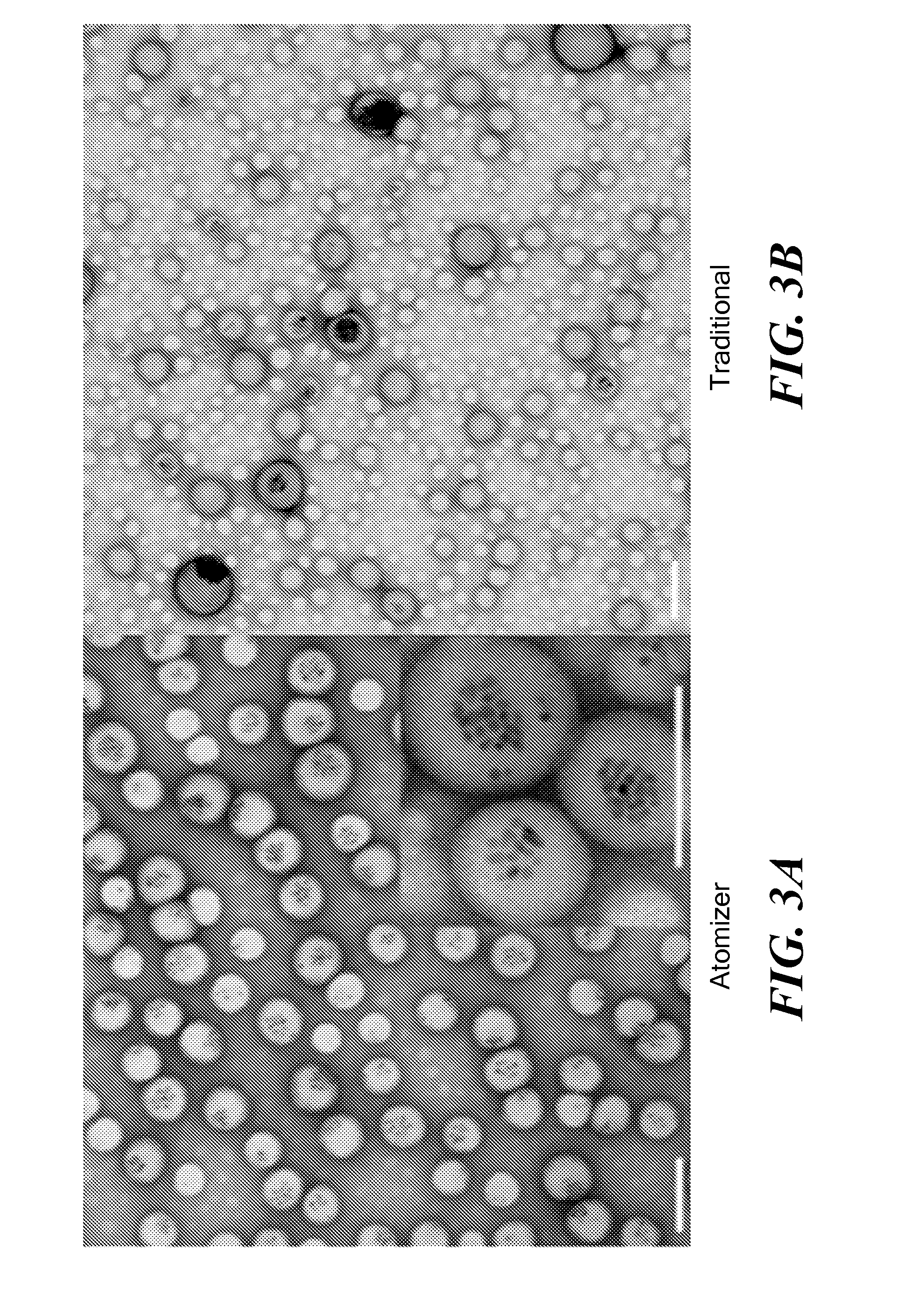Nanoparticle- and Drug-Containing Polymersomes for Medical Applications
a technology of nanoparticles and polymersomes, applied in the direction of heterocyclic compound active ingredients, microcapsules, capsule delivery, etc., can solve the problems of increasing the number of new antibiotic drugs in the pipeline, increasing hospital stays and long-term complications, and increasing the mortality rate of patients with antibiotic-resistant infections
- Summary
- Abstract
- Description
- Claims
- Application Information
AI Technical Summary
Benefits of technology
Problems solved by technology
Method used
Image
Examples
example 1
Materials and Methods
[0049]Particle Synthesis.
[0050]The antibiotic solution and silver nanoparticles were encapsulated inside the polymersomes by self-assembly. First, 1 mL of dodecanethiol-functionalized silver nanoparticles (5±2 nm, 0.25% (w / v) in hexane; Sigma-Aldrich, St. Louis, Mo.) was resuspended in 1 mL of tetrahydrofuran (THF; Sigma-Aldrich, St. Louis, Mo.), and subsequently ultrasonicated (Bransonic 2510R-DTH, Emerson Industrial Automation, Danbury, Conn.) to prevent aggregation. 10 mg of the mPEG-PDLLA copolymer (Polyscitech, West Lafayette, Ind.) was added to the mixture, which was again ultrasonicated until the copolymer was completely dissolved. This organic nanoparticle / polymer solution was then injected through a syringe atomizer (MAD300, LMA, San Diego, Calif.) into a 0.01 M solution of PBS (Sigma-Aldrich, St. Louis, Mo.) with or without ampicillin sodium salt (Sigma-Aldrich, St. Louis, Mo.) in a 15 mL glass round bottom tube with a 7×2 mm magnetic stir bar at 500 r...
example 2
Particle Design, Synthesis, and Characterization
[0065]A diblock copolymer of methoxypoly(ethelyne glycol)5000 and poly(D)-(L)-lactic acid50,000 (mPEG-PDLLA 5000: 50,000 Da) was utilized for polymersome synthesis. The mPEG block was chosen because it has been documented to confer a “stealth” property to the particles in vivo in order to help prevent premature clearance by the immune system.17 The racemic mixture of D- to L-lactides in the PDLLA block was optimized to generate polymersomes with a release rate sensitive to changes in temperature.18 This allows for increased stability (low release) during storage at 4° C., and increased release at physiological temperature.
[0066]Silver nanoparticle-embedded polymersomes (AgPs) were synthesized using a modified stirred-injection technique. Monodispersed hydrophobic silver nanoparticles 5 nm in diameter were suspended in an organic solvent containing dissolved mPEG-PDLLA. This mixture was injected through a syringe atomizer at high speed ...
example 3
Bacterial Growth Inhibition
[0069]E. coli is a Gram-negative, rod-shaped bacterium which has been extensively investigated in the laboratory for over 60 years, making it one of the most widely studied prokaryotic organisms and thus ideal for a proof-of-concept application. First, E. coli cells were transformed with a plasmid containing the bla gene encoding for the enzyme TEM-1 β-lactamase using calcium chloride and heat-shock.20 TEM-1 is the most common β-lactamase found in enterobacteriaceae, and confers resistance to multiple antibiotics including the narrow-spectrum cephalosporins, cefamandole, cefoperazone, and all of the penicillins except for temocillin.21
[0070]The effectiveness of AgPs at preventing bacterial growth was analyzed in a plating assay. AgPs were made in the presence of different concentrations of ampicillin. Varying concentrations of such AgPs were incubated for 24 hours with cultures of bacterial cells at different culture densities, and samples from the cultur...
PUM
| Property | Measurement | Unit |
|---|---|---|
| Fraction | aaaaa | aaaaa |
| Diameter | aaaaa | aaaaa |
| Diameter | aaaaa | aaaaa |
Abstract
Description
Claims
Application Information
 Login to View More
Login to View More - R&D
- Intellectual Property
- Life Sciences
- Materials
- Tech Scout
- Unparalleled Data Quality
- Higher Quality Content
- 60% Fewer Hallucinations
Browse by: Latest US Patents, China's latest patents, Technical Efficacy Thesaurus, Application Domain, Technology Topic, Popular Technical Reports.
© 2025 PatSnap. All rights reserved.Legal|Privacy policy|Modern Slavery Act Transparency Statement|Sitemap|About US| Contact US: help@patsnap.com



